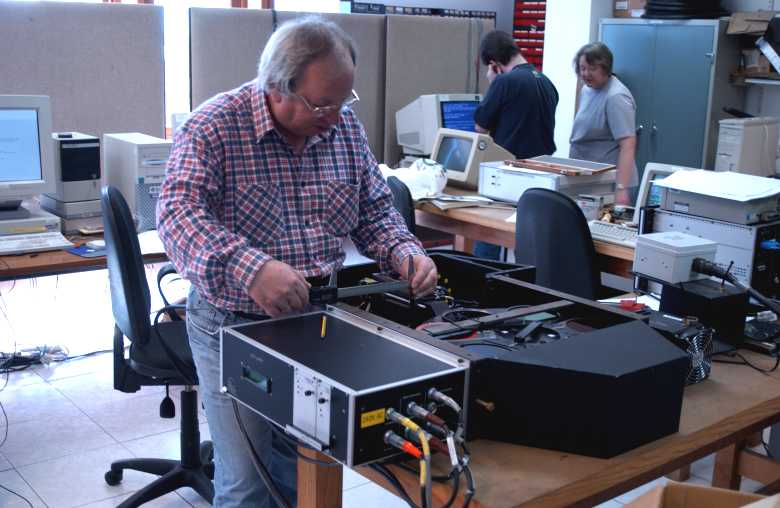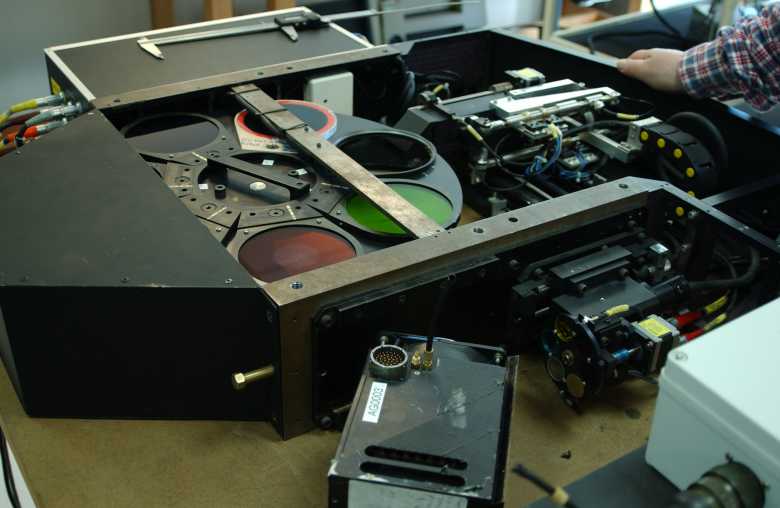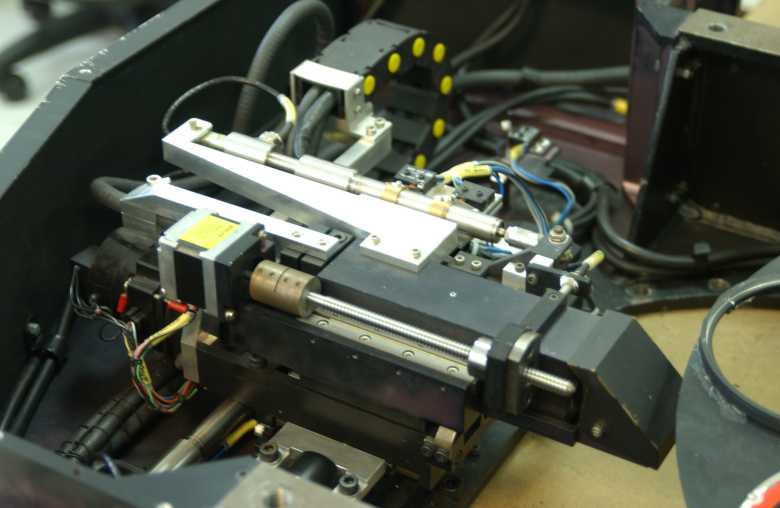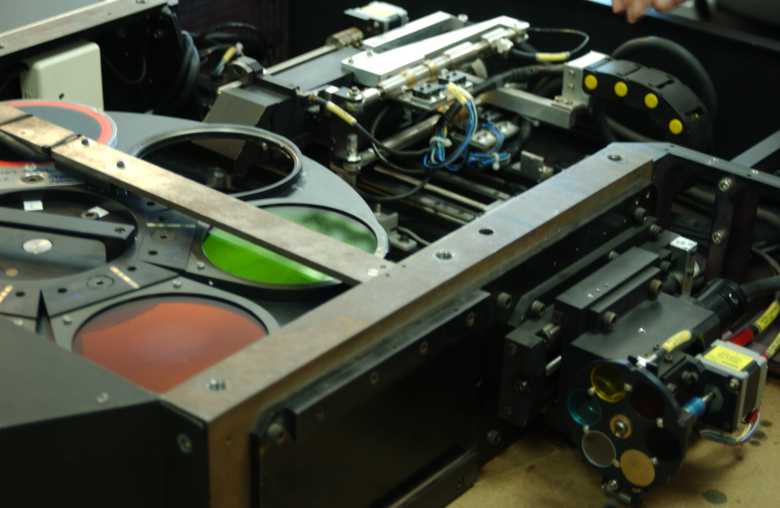This was one of the last projects I was involved with before I retired. This time down in the workshop in the ING office in Santa Cruz. The WHT prime focus imaging system had been having problems finding guide stars when the autoguider probe was sent to known coordinates generated from the Hubble Space Telescope Guide Star Catalogue. My job was to re-calibrate the probe positioning mechanisms which had drifted over time.
Any ex-RGO person seeing this image will instantly recognise Marion Fisher in the background. She had came out to do some software upgrades on the telescope control systems.

Checking the distance travelled in the X-direction of the autoguider probe using a digital
vernier gauge. This was quite a job and required repeated moves whilst making adjustments to
the range and scaling electronics which read the position encoders. The end result being to
achieve a linear scale between the extremities of movement. I got there in the end!

This instrument was made at the RGO (Cambridge). I went there in 1993 to gather some information
and see it in action as I would be responsible for it when it eventually came to La Palma. The
box in the foreground houses the CCD detector for the autoguider and is fitted with a Peltier cooler.

The autoguider probe X-Y positioning mechanism
This view shows the detail of the off-axis autoguider probe positioning mechanism. The small motor and leadscrew seen in the foreground optimizes the autoguider focus. Larger motors drive the X and Y slides through precision leadscrews to within a few microns of a demanded position. Accuracy and repeatability is the key factor here as the autoguider field of capture is only 25 arcseconds square.A mirror mounted at 45o in the head of the probe picks a suitable guide star from around the periphery of the target under observation. A coherent fibre optic cable bundle (which can be seen as 'a thick cable' coming out from the rear of the probe) transfers the image to the autoguider CCD detector mounted externally on the unit. From what I recall, the WHT when observing at prime focus can pick up guide stars as faint as Mv=18.

A closer view showing the main CCD camera and autoguider filter wheels
Depending on what main filter is in use, it is sometimes necessary to change the telescope focus to compensate for the thickness of the glass. To ensure the autoguider remains in focus and to correct for refraction errors when observing at large zenith distances, the autoguider and main filter colour pass bands should be the same also. The small filter wheel unit mounted externally for the autoguider automatically makes these corrections whenever a main filter is changed.

